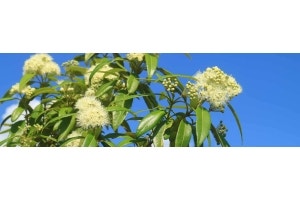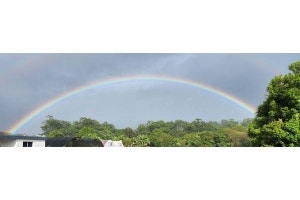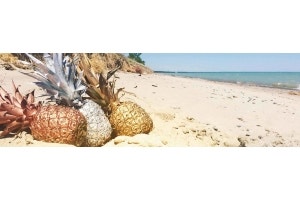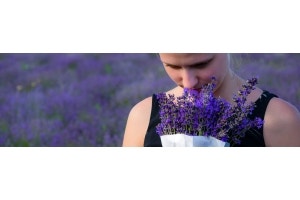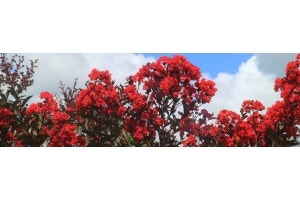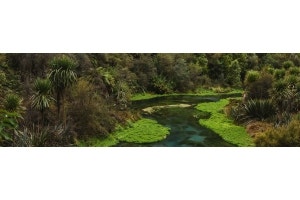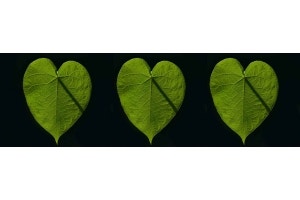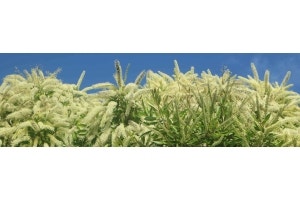
What Is Well-Drained Soil?
At Australian Plants Online we often recommend you plant your new tubestock in well-drained soil, or free-draining soil - but what IS well-drained soil?
 Most plants love what's called "well drained" soil,
That means soil where the water or rainfall moves through steadily from the surface to the lower levels, moistening the soil particles as it goes, gradually reaching the bed rock beneath (or the saucer, if it's a potted plant.)
Most plants love what's called "well drained" soil,
That means soil where the water or rainfall moves through steadily from the surface to the lower levels, moistening the soil particles as it goes, gradually reaching the bed rock beneath (or the saucer, if it's a potted plant.)
This soil is light and airy, with no solid clumps. The horticultural term for this is "friable" - which means easily crumbled. Think of it like the texture of breadcrumbs - fine and crumbly and open. Or if you bake, like good pastry mix. If you wet it, well-drained soil soaks up the water and gradually dries out.
 Good commercial potting mix has this well-drained texture - and plenty of organic matter to hold onto any water it encounters. That is a good texture to aim for in garden soil, for you to be able to grow the widest range of plants.
Good commercial potting mix has this well-drained texture - and plenty of organic matter to hold onto any water it encounters. That is a good texture to aim for in garden soil, for you to be able to grow the widest range of plants.
Sometimes potting mix can dry out, especially if it has a lot of coir in the mix. You might mistake this for well-drained soil, as the water will move through it fast - but it tends to run out of the bottom of the pot almost immediately, and not be absorbed. The solution to this is to float the pot in a bucket of water. You will see bubbles emerge from the soil surface as the air is displaced. As the potting mix or soil re-wets, the pot will start to sink.
 "Free-draining" soil is even lighter than well drained-soil. Often sandy and dry, it's light and open in texture, and rainwater moves very quickly through it. Some plants grow happily in this kind of light soil, as it helps them grow a root structure fast. Others need extra helpings of added organic matter like compost, to retain valuable nutrients for growth, and hang onto rainwater for longer.
"Free-draining" soil is even lighter than well drained-soil. Often sandy and dry, it's light and open in texture, and rainwater moves very quickly through it. Some plants grow happily in this kind of light soil, as it helps them grow a root structure fast. Others need extra helpings of added organic matter like compost, to retain valuable nutrients for growth, and hang onto rainwater for longer.
 "Heavy" soils hang onto rainfall and water - instead of moving through the layers towards the bedrock, it stays in the soil.
Heavy soils are wet, dense, and if they are clay-based, can often be moulded into lumps if you squeeze it. If they ever dry out, you might notice significant cracking, with a hard surface.
"Heavy" soils hang onto rainfall and water - instead of moving through the layers towards the bedrock, it stays in the soil.
Heavy soils are wet, dense, and if they are clay-based, can often be moulded into lumps if you squeeze it. If they ever dry out, you might notice significant cracking, with a hard surface. Heavy and clay soils are often high in nutrients, but tricky for plants growing there to access those nutrients. If you have heavy wet soil we have some tips in our blog to help you manage the soil, and grow plants that are suited to those conditions.
 Peat bogs and marshes are the opposite of well-drained soils - they don't drain at all!
They have lots of organic matter in them, but because there's no air flow to help the water evaporate, and create pockets for roots to move into, there's no microbes to aid growth either. Plants can rot instead of grow.
It takes a special kind of plant to grow in these conditions. Sometimes those plants are specially adapted - like mangroves, samphire, and waterlilies; sometimes they are just resilient and stubborn!
Peat bogs and marshes are the opposite of well-drained soils - they don't drain at all!
They have lots of organic matter in them, but because there's no air flow to help the water evaporate, and create pockets for roots to move into, there's no microbes to aid growth either. Plants can rot instead of grow.
It takes a special kind of plant to grow in these conditions. Sometimes those plants are specially adapted - like mangroves, samphire, and waterlilies; sometimes they are just resilient and stubborn!





